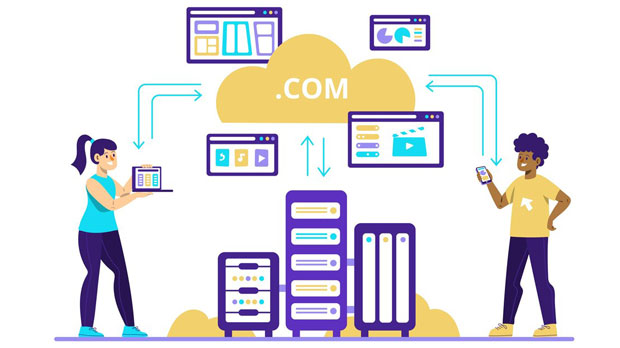Static SOCKS5 residential proxies have become increasingly popular in various digital activities, from data scraping to online anonymity and content management. These proxies, known for their static IP addresses, provide users with a secure, consistent, and reliable way to interact with the internet. In this article, we will delve into the rental costs of static SOCKS5 residential proxies and explore their long-term usage effects. Our analysis will cover the factors influencing pricing, the benefits and challenges of long-term use, and practical recommendations for businesses and individuals considering these proxies for ongoing operations. Understanding Static SOCKS5 Residential ProxiesStatic SOCKS5 Residential Proxies are specialized proxy servers assigned to real residential IP addresses rather than data center IPs. This makes them appear more legitimate and less likely to be blocked or flagged by websites. Unlike rotating proxies, which change their IP addresses periodically, static proxies maintain a consistent IP for extended periods. This stability is particularly useful for tasks requiring ongoing connections, such as web scraping, e-commerce automation, and social media management.Cost Factors for Renting Static SOCKS5 Residential ProxiesWhen evaluating the cost of static SOCKS5 residential proxies, several key factors come into play:1. Geographic Location of Proxies: Proxies located in countries with high demand or more stringent regulations tend to be more expensive. For example, residential proxies in regions like North America or Western Europe are generally priced higher than those in other regions due to the cost of acquiring residential IPs in those areas.2. IP Pool Size and Quality: The size of the IP pool affects the rental price. A large pool of diverse residential IPs allows users to perform more extensive operations without risking detection or IP blacklisting. Proxies with high-quality, non-dedicated IPs tend to be more costly due to their greater reliability and lower likelihood of encountering issues during long-term use.3. Duration of Rental Agreement: Rental agreements for longer durations often come with discounts. Typically, the longer the commitment, the lower the monthly cost. Short-term rentals, on the other hand, are priced higher, offering more flexibility at a premium cost.4. Bandwidth and Speed: The amount of bandwidth required and the speed of the proxy connection can also influence rental costs. Proxies offering high bandwidth and faster speeds, especially for data-intensive tasks, typically come at a higher price point.Long-Term Usage Effects of Static SOCKS5 Residential ProxiesThe long-term usage of static SOCKS5 residential proxies can bring several benefits as well as challenges. Here's an in-depth look at the effects over extended periods:1. Stability and Reliability: One of the main advantages of using static SOCKS5 residential proxies over time is their stability. Unlike rotating proxies, which can sometimes lead to inconsistencies in connections, static proxies provide a persistent IP address. This reliability is crucial for businesses that rely on stable, uninterrupted connections, especially in applications like automated market research or account management.2. Reduced Risk of IP Bans: Since static proxies use real residential IP addresses, they are less likely to be flagged or banned by websites compared to data center proxies. For long-term users, this reduces the risk of disruptions in service. Websites are more likely to trust residential IP addresses, especially when the IPs are static and not constantly changing, making it easier to maintain access over time.3. Reputation Management and Anonymity: The consistent use of a single static IP address can be beneficial for reputation management, particularly in social media and online marketing. By using a residential proxy, users can keep their activities under the radar, minimizing the chances of detection by algorithms that monitor suspicious activities. This aspect is especially crucial for businesses aiming to protect their digital presence and privacy.4. Cost vs. Benefit Considerations: While static SOCKS5 residential proxies are often more expensive than other types, their long-term benefits may outweigh the initial investment. For businesses that require consistent, reliable, and secure access to digital resources, the higher cost of rental can be justified by the enhanced performance and reduced risks associated with their usage.Challenges of Long-Term Use1. Resource Allocation and Scalability: Managing a large number of static proxies can become challenging over time, especially when it comes to maintaining the resources required to support them. Businesses may need to invest in additional infrastructure or management tools to handle a growing proxy pool. This can increase operational costs and complexity.2. Price Increases Over Time: While initial costs might seem reasonable, prices for static SOCKS5 residential proxies can increase over time due to demand, changes in IP availability, and service provider pricing strategies. Users who commit to long-term contracts might find themselves paying more than expected, especially if the service becomes more expensive or less reliable.3. Limited Control Over IP Rotation: Unlike rotating proxies, where the IP addresses change periodically, static proxies offer no such flexibility. This can be limiting for users who require a fresh IP for each new session to avoid detection. While static IPs provide a consistent connection, they may not be ideal for all use cases.Practical Recommendations for Long-Term UsageFor businesses and individuals considering the long-term use of static SOCKS5 residential proxies, the following strategies can help optimize the investment:1. Regular Monitoring and Maintenance: Regularly monitor the performance of the static proxies to ensure they are functioning correctly and meet the expected performance benchmarks. Any issues related to connectivity, speed, or IP bans should be addressed promptly to maintain the reliability of the service.2. Diversify Proxy Sources: Relying on a single proxy provider can be risky, especially if the service undergoes changes in pricing or performance. It’s advisable to diversify the proxy sources to ensure that you always have backup options available in case of disruptions.3. Use for Specific Use Cases: Static SOCKS5 residential proxies are best suited for specific use cases that demand stability, reliability, and anonymity. For tasks such as account management, data scraping, and content management, they provide excellent results. However, for applications requiring a high degree of anonymity or IP rotation, other proxy options may be more suitable.4. Negotiate Long-Term Contracts: If you are committed to using static SOCKS5 residential proxies for an extended period, consider negotiating long-term contracts with your provider. This can help lock in lower prices and ensure consistent service without unexpected price hikes.In conclusion, static SOCKS5 residential proxies offer several advantages in terms of stability, security, and reliability for long-term use. Their rental costs can vary depending on factors such as location, bandwidth, and duration, but the benefits they provide often justify the investment. Businesses and individuals using these proxies for sustained operations can enjoy reduced risk of IP bans, consistent access, and enhanced online anonymity. However, challenges such as cost fluctuations and resource management must also be considered. By understanding the cost structure and implementing effective management strategies, users can maximize the long-term benefits of static SOCKS5 residential proxies.
Sep 16, 2025



































































